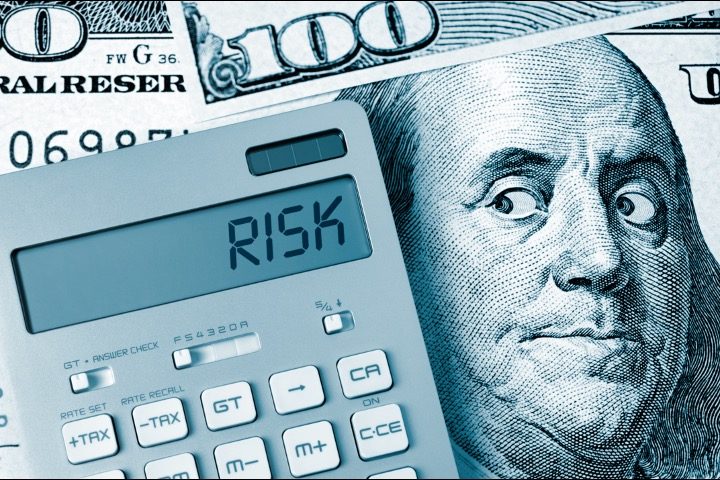
Fitch Ratings, one of the three major credit rating services that ranks government debt, was brutal in its assessment on Tuesday of the United States government that caused it to reduce its rating from “prime” to “high medium grade.”
The rating downgrade of the United States reflects the expected fiscal deterioration over the next three years, a high and growing general government debt burden, and the erosion of governance relative to [its] peers over the last two decades that has manifested in repeated debt limit standoffs and last-minute resolutions.
This accurately reflects what now passes for fiscal responsibility in Washington, D.C.
Fitch expanded:
In Fitch’s view, there has been a steady deterioration in standards of governance over the last 20 years, including on fiscal and debt matters, notwithstanding the June bipartisan agreement to suspend the debt limit until January 2025.
The repeated debt-limit political standoffs and last-minute resolutions have eroded confidence in fiscal management.
The budget “process” is a mess:
In addition, the government lacks a medium-term fiscal framework, unlike most peers, and has a complex budgeting process.
These factors, along with several economic shocks as well as tax cuts and new spending initiatives, have contributed to successive debt increases over the last decade.
And Congress continues to kick the can down the road:
Additionally, there has been only limited progress in tackling medium-term challenges related to rising social security and Medicare costs due to an aging population.
Taken together, there is an eerie semblance to Venezuela. Not long ago, Venezuela was the richest country in South America. As Francisco Rodriguez, a student during those heady days, wrote:
The Venezuela in which I grew up was a very confident nation.
And it trusted its democracy, and it valued its democratic system. We all thought that this was a very stable system. It had been a democracy since 1958, so during the period of the 1970s where almost all of Latin America was in military dictatorship, Venezuelan democracy had survived.
Its riches were dissipated with the arrival of communism. Spending programs were increased while the country’s oil revenues dropped. Its currency lost most of its value, and now the country ranks among the world’s poorest.
Venezuela’s government debt is now rated as “extremely speculative,” just one step above “in default.”
And that’s where U.S. government debt is headed, despite the claims of the other two credit rating services, which continue to promote the lie that all is well. Moody’s keeps U.S. debt at its highest (AAA) rating, while S&P’s Global Ratings keep it one step below its highest, at AA+.
It was S&P that startled and annoyed the world back in 2011 (following another faux budget standoff) when it reduced U.S. government debt to second-tier level.
The rating decline on Tuesday from Fitch generated that same annoyance and denial. Treasury Secretary Janet Yellen said that Fitch’s downgrade was “arbitrary, and based on outdated data,” while Senate Minority Leader Chuck Schumer (D-N.Y.) blamed the downgrade on Republicans, claiming the downgrade reflects “reckless brinkmanship and flirtation with default” by House GOP members and adding that they “must never push our country to the brink of default again.”
With no limit now on spending, thanks to the latest budget “agreement,” the Treasury just announced that it will issue $1 trillion of new debt in the next three months to pay the government’s bills.
Noted economist Murray Rothbard wrote years ago that “If government manages to establish paper tickets or bank credit as money, as equivalent to gold grams or ounces, then the government, as dominant money-supplier, becomes free to create money costlessly and at will.”
He added:
As a result, this “inflation” of the money supply destroys the value of the dollar, drives up prices, cripples economic calculation, and hobbles and seriously damages the workings of the market economy.
Alan Greenspan, once a disciple of hard-money advocate Ayn Rand until he drank the Wall Street Kool-Aid and became head of the Federal Reserve, wrote an exposé of the cabal’s rejection of the gold standard:
Under the gold standard, a free banking system stands as the protector of an economy’s stability and balanced growth.…
In the absence of the gold standard, there is no way to protect savings from confiscation through inflation. There is no safe store of value. If there were, the government would have to make its holding illegal, as was done in the case of gold….
The financial policy of the welfare state requires that there be no way for the owners of wealth to protect themselves.
This is the shabby secret of the welfare statists’ tirades against gold.
Deficit spending is simply a scheme for the “hidden” confiscation of wealth. Gold stands in the way of this insidious process. It stands as a protector of property rights. If one grasps this, one has no difficulty in understanding the statists’ antagonism toward the gold standard.
Please note Greenspan’s referring to deficit spending as the “’hidden’ confiscation of wealth.” For that is what it is: it is taxation through wealth transfer from those who earned it to those who didn’t, through the depreciation of the value of the currency. More insidious than direct taxation, no one can protect himself from its effect.
Eventually, without restoration of the gold standard, the American government will continue its confiscation of wealth through inflation until the American currency reverts to its ultimate value as mere paper. The downgrade from Fitch merely adds testament to the continued debasement of the currency.



